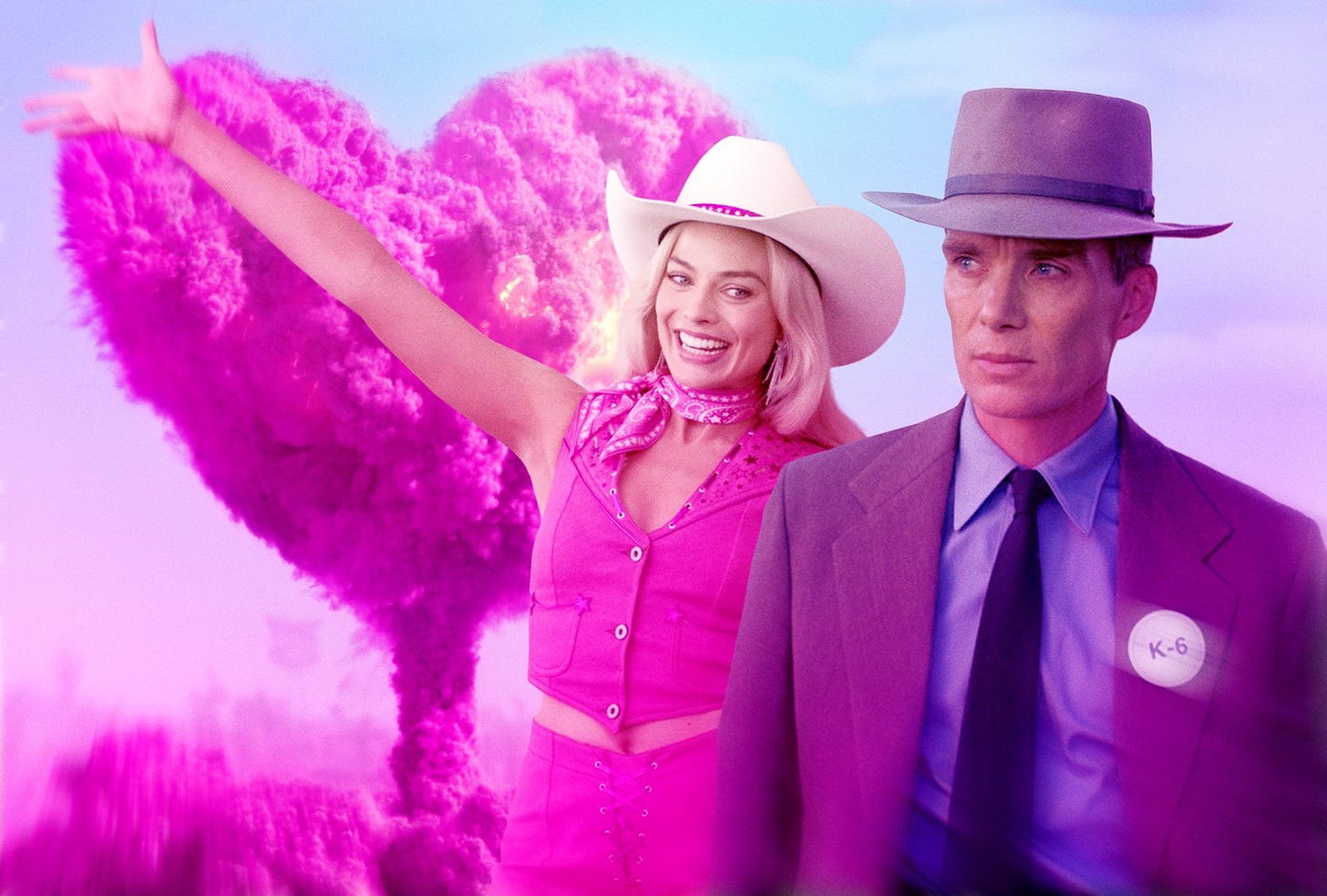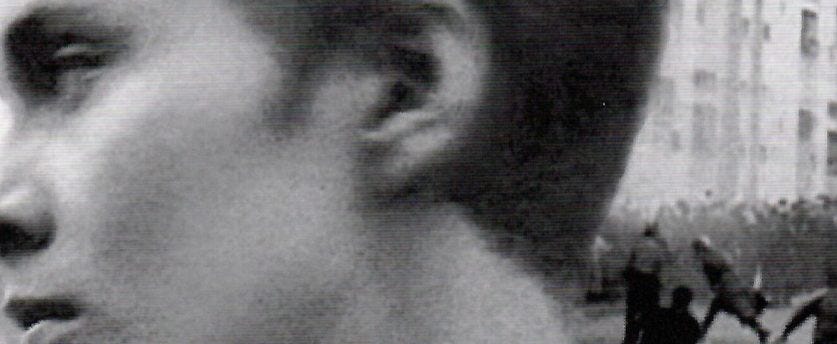The lead-up to the simultaneous release this past weekend of two potential blockbusters, Greta Gerwig’s Barbie and Christopher Nolan’s Oppenheimer, mushroomed, as most of you will surely have noticed, into the sort of hyperflogged, precision-engineered, artificially ginned-up, self-fulfilling mass-media pseudo-event that will doubtless be studied in university PR courses for years to come. I mean, after all, this was hardly the first time in history that two such blockbusters had been scheduled for release the same weekend, and what could possibly have made this particular instance so stunningly different? And yet epochally different it was surely made to be, occasioning all manner of circumspect think pieces and at least two (equally inspired) mash-up parody trailers:
View Barbieheimer trailer here. View Barbenheimer trailer here.
For my own part, though, the whole meme-fusionalia called to mind an altogether more thoughtfully considered and brilliantly realized effort along the same lines from fifteen years back, Dennis Adams’s 2008 Double Feature, a show and then a book in which the Cooper Union film theorist seamlessly inserted screen-captures of Jean Seberg ambling down Paris’s Champs Elysees, languorously hawking her New York Herald Tribunes, from Jean Luc Godard’s Breathless (1959), into instantly recognizable backdrops of the casbah medinas from Gillo Pontecorvo’s The Battle of Algiers (1965).
Part of what made Adams’s image-meld so compellingly resonant was the way that, come to think of it, the blithely apolitical Seberg and Belmundo characters in Breathless would have had to have been playing out their grand passion right in the midst of all that Algerian horror (indeed within months of the particularly gory climax of the very battle reprised in Pontecorvo’s film)
Indeed stories about that very conflict would likely have festooned the very papers the Seberg character was hawking.
(For further images from the series, see a curious video in which an almost parodically self-serious French-academic curator guides visitors through a recent show of the Adams work at Paris’s Centre National des Arts Plastiques, here.)
Adding to the impact of Adams’s project were some lines of the actual actress Seberg’s own, which he included as epigraph at the start of the entire volume:
You know the old story of the chameleon.
Put him on green, he turns green
Put him on black, he turns black.
But if you put him on plaid, he explodes.
*
What I had not realized, though, until I started preparing this Minicab was how Godard himself beat us all to the punch, back in 1963-4, with “Le Grand Escroc,” his short contribution to an international crime-comedy anthology compilation entitled Les Plus Belles Escroqueries du Monde (The World’s Most Beautiful Swindles) which begins with a scene of Jean Seberg, apparently playing the same character as her newspaper-hawking-salesgirl from Breathless, now, five years on, a novice telejournalist, in bed again, though this time by herself, absorbed in reading Herman Melville’s Le Grand Escroc (The Confidence Man),
who presently travels to Marrakesh to compile a cinema verité account of street life there. And indeed, much of the 25-minute film consists of the sorts of vantages she prizes with her camera while doing so. At one point, though, while walking through the souk, she stops at a stall to purchase a traditional gown which she presently dons,
whereupon she is promptly arrested (here and in most of what follows, I am drawing on Richard Brody’s account in his magisterial Godard book, Everything is Cinema, since, unusually for me, I have been unable to scare up the slightest trace of the film itself online and can’t share any such footage with you—if any of the rest of you have access to same, please share it with us by way of the Comments). Anyway, eventually she gets released—it turns out that there is some counterfeiter who has been distributing his fake bills to beggars in the market, which is how she may have (at a remove or two) come upon hers, and she and the police guy go looking for the counterfeiter (she figures he would make a great man-in-the-street interview), she is recording the whole search all the while, and when they finally find him, she and he get into a great metaconversation regarding who is cheating who in this exchange, who is counterfeiting what, the petty criminal or the documentary filmmaker, and eventually, apparently, the film ends with the Seberg character aiming her camera out at the audience,
implicating all of us in the dialectical discourse, while Godard, in his own raspy whisper, intones the moral of the story, reciting lines from Shakespeare: “All the world is a stage / And all the men and women merely players / They have their exits and their entrances / And one man in his time plays many parts.” Meanwhile, somewhere in all of this, Seberg’s camera pans over to this guy:
For more on whom, see the coda to Issue #25 of this Substack series.
Incidentally, as I was putting this issue to bed, I spoke briefly with Richard Brody, and while concurring that the protagonists in Breathless had seemed blithely oblivious to the horrors of Algiers, he insisted that this was hardly true of the film’s director, even at the time. While Breathless was Godard’s first film, between the shooting of that film and its release Godard was already at work on what was to be his second film, Le Petit Soldat, a spy vs spy caper rife with allusions to Algeria both in terms of its plot and its themes (notably including that of torture). The French authorities came down hard on the latter film, however, forbidding its screening till several years later. Such that the seemingly blithe obliviousness of Breathless came to constitute Godard’s allusion to that state of affairs, as it were, avant la lettre.
Enough!
See you next week…














“hyperflogged, precision-engineered, artificially ginned-up, self-fulfilling mass-media pseudo-event” Perfect!